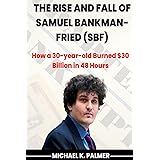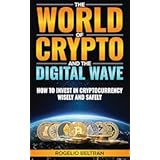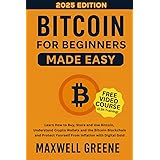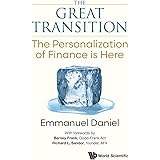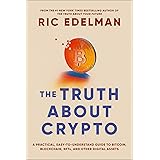Navigating the Evolving Cryptocurrency Landscape: Institutional Adoption and Ecosystem Expansions
The cryptocurrency market, with its inherent volatility and rapid innovation, can often present a complex environment for both seasoned investors and new entrants. Understanding the pivotal shifts, institutional moves, and technological advancements is critical for informed decision-making. The accompanying video offers a concise overview of several significant developments impacting key digital assets, including Bitcoin, Cardano, Chainlink, XRP, Ethereum, and Theta.
This article aims to further elaborate on these crucial updates, providing deeper context and analysis. An examination of the underlying implications of these events for the broader blockchain ecosystem and the digital economy is presented. Through this expanded discourse, a more comprehensive understanding of the current trajectory of the cryptocurrency space can be attained.
Institutional Capital Inflows: Bitcoin’s Maturation as a Digital Reserve Asset
A notable event signaling a profound shift in market perception was the announcement of MassMutual’s acquisition of $100 million in Bitcoin. This substantial investment by a 169-year-old insurance giant, a Fortune 500 company, marks a historical precedent. It indicates that digital assets are increasingly being viewed as a legitimate component within diversified investment portfolios, moving beyond speculative interest.
This transaction was facilitated by NYDIG, a specialized financial services company managing Bitcoin and other cryptocurrencies. MassMutual further solidified its commitment by acquiring a $5 million stake in NYDIG itself. Such actions suggest a long-term strategic allocation into Bitcoin, driven by a desire for “measured yet meaningful exposure to a growing economic aspect of our increasingly digital world,” as articulated by a company spokesperson. This approach challenges the traditional financial orthodoxy and could catalyze further institutional adoption as other entities observe the path forged by MassMutual.
Cardano’s DeFi Horizon: The Goguen Era and Strategic Migrations
The Cardano ecosystem is poised for a significant expansion with the impending rollout of its Goguen smart contract functionality, anticipated for completion by February 2021. This upgrade is foundational, enabling decentralized applications (DApps) to be built and integrated into the network. In a significant validation, Bondly, a decentralized e-commerce platform, has commenced its transition from Polkadot to become the first DeFi project to run on the Cardano blockchain.
This move highlights the increasing competition among layer-1 protocols to attract developers and projects. Bondly brings two core platforms to Cardano: BSwap, an over-the-counter (OTC) trading platform, and BondProtect, which provides decentralized escrow and buyer protection services. The decision by Bondly to migrate, even with Polkadot having operational DApp capabilities and Cardano’s Goguen rollout still in progress, suggests a strategic alignment with Cardano’s long-term vision, robust research-driven development, and potentially, its growing community. The coming months will critically assess Cardano’s ability to onboard a diverse range of DApps and developers, establishing its position as a formidable player in the DeFi landscape.
Chainlink’s Oracle Dominance Extends to Binance Smart Chain
Chainlink, recognized for its decentralized oracle network, has achieved a pivotal integration with the Binance Smart Chain (BSC). Its oracle solution has been adopted as the recommended standard on BSC’s mainnet, significantly expanding its reach beyond the Ethereum ecosystem. This development immediately renders Chainlink’s robust data feeds accessible to any smart contract deployed on BSC, thereby unlocking a new market for its services.
The benefits are reciprocal; BSC’s ecosystem is thereby empowered to support a more expansive array of externally connected DeFi applications. This includes not only price feeds, which are critical for lending platforms and stablecoins, but also Chainlink’s Verifiable Random Function (VRF). The VRF provides a secure and provably fair source of on-chain randomness, a capability vital for numerous smart contract verticals such as gaming, non-fungible tokens (NFTs), and various reward systems. This integration solidifies Chainlink’s role as a cross-chain oracle solution, indispensable for the functionality and security of the decentralized web.
The XRP Spark Airdrop and Flare Network: A Strategic Pivot
The cryptocurrency XRP has been at the center of attention due to the highly anticipated Spark token airdrop by the Flare Network. This event, involving a 1:1 snapshot of XRP holdings to determine Spark token eligibility, caused a notable surge in XRP’s price over the preceding six weeks. The Flare Network’s objective is to establish a smart contract bridge between Ripple’s XRP Ledger and other blockchain networks, thereby extending smart contract functionality to XRP holders.
However, market dynamics often dictate a “buy the rumor, sell the news” phenomenon. It was widely anticipated that a short-term price decline might occur post-snapshot as some holders could be tempted to offload XRP to realize profits accumulated from the surge. The ultimate value and utility of the Spark tokens will be determined by the adoption and functionality of the platforms and applications built within the Flare Network ecosystem, particularly its effectiveness in enabling new use cases for XRP.
Ethereum’s Public Market Debut: The 3iQ Ether Fund IPO
Further demonstrating the mainstreaming of digital assets, the $76.5 million Ether Fund, managed by Canadian investment firm 3iQ, completed its Initial Public Offering (IPO) on a Canadian stock exchange. Trading under the symbol QETH.U, this fund allows Canadian investors to gain exposure to Ether’s price movements through a regulated investment vehicle, without directly holding the underlying cryptocurrency.
This IPO represents a crucial step in bridging the gap between traditional finance and the decentralized digital asset space. It provides an avenue for institutional and retail investors seeking exposure to Ethereum within a familiar and regulated framework. The success of such offerings underscores the growing demand for digital assets as a legitimate asset class, often preferred through easily accessible, publicly traded instruments rather than direct cryptocurrency purchases, which may involve navigating various technical and custodial complexities.
Theta Network’s Evolution: Smart Contracts and Enhanced Decentralization
The Theta Network, a blockchain specializing in decentralized video streaming, has recently undergone significant mainnet enhancements. A primary upgrade introduces smart contract capabilities to the network, enabling the creation of decentralized video streaming applications (DApps) directly on Theta. This development opens avenues for new functionalities, monetization models, and user experiences within the decentralized content delivery sphere.
Another key improvement involves the reduction of the Guardian Node staking threshold to 1,000 Theta tokens. This adjustment is designed to lower the barrier to entry for participation in network validation, fostering greater decentralization. Complementary additions include a refreshed website offering comprehensive protocol information, a revised block explorer with smart contract data, and the unveiling of the Theta-JS Javascript SDK. These tools collectively aim to simplify development on the Theta blockchain, thereby encouraging a wider array of developers to build and innovate within its ecosystem, ultimately enhancing the robustness and utility of this unique cryptocurrency network.


